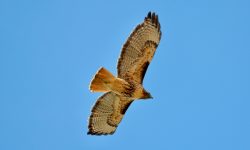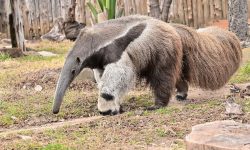Eagles are among the most iconic birds in the world. Revered for their power, sharp vision, and hunting prowess, these birds of prey dominate the skies with grace and authority. From the Bald Eagle of North America to the Harpy Eagle of South America, their traits are both fascinating and formidable. Let’s explore the top 10 defining characteristics of eagles that make them such remarkable creatures.
1. Exceptional Eyesight
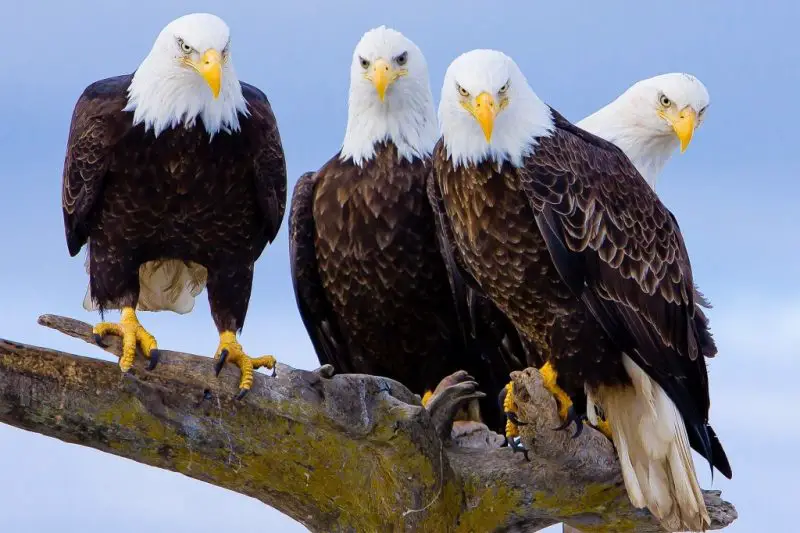
Nature’s Ultimate Long-Range Lens
An eagle’s eyesight is nothing short of extraordinary—so advanced that it often seems almost supernatural. While humans rely on technology to see great distances, eagles are born with a natural zoom lens built right into their eyes. Their vision is estimated to be up to eight times sharper than that of a human, allowing them to detect the smallest twitch of a rabbit’s ear or the shimmer of fish scales from over two miles away under ideal conditions.
This razor-sharp vision comes from several specialized adaptations. Eagles have two focal centers, or foveae, in each eye, giving them a form of “binocular and peripheral vision” at the same time. This means they can focus on objects straight ahead while also scanning the sides for motion. Their retinas contain millions more light-detecting cells (photoreceptors) than ours do, packed so densely that fine details don’t blur with distance.
Their large eyes—taking up most of the skull space—also help gather more light, making their vision especially effective even in low-contrast environments like cloudy skies or shaded forests. Combined with rapid visual processing and excellent depth perception, these traits make eagles masterful aerial hunters, able to strike with deadly accuracy from hundreds of feet above the ground.
In short, where humans might see a blur on the horizon, an eagle sees dinner taking its final steps.
2. Strong and Sharp Talons
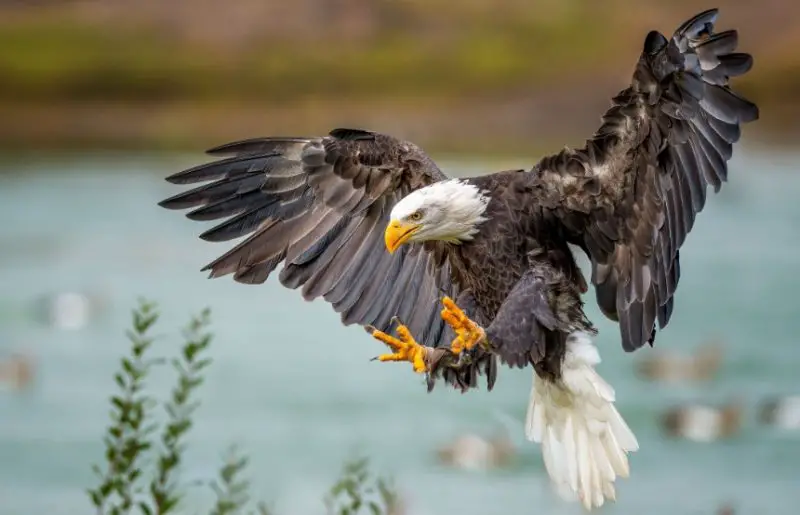
Precision Weapons of the Sky
If the eagle’s eyes are its targeting system, then its talons are the lethal weapons that finish the job. These fearsome claws are not just strong—they are biomechanical masterpieces, honed by millions of years of evolution for gripping, piercing, and holding prey with devastating effectiveness. Each foot is equipped with four thick, curved talons, tipped with needle-sharp points capable of sinking deep into flesh and bone.
What makes eagle talons truly formidable is their grip strength. Some large species, such as the Harpy Eagle or Bald Eagle, can exert forces exceeding 400 pounds per square inch (psi)—stronger than the bite of a Rottweiler. That immense pressure allows them to instantly immobilize prey like rabbits, snakes, fish, or even small deer by crushing bones or puncturing vital organs.
The rear talon, known as the hallux, acts like a powerful hook, locking prey in place while the front talons clamp down with precision. Once the prey is seized, the eagle’s foot muscles lock into place, allowing it to fly long distances while holding onto struggling animals without expending constant energy.
These talons are not just tools for hunting—they are also used in self-defense, territorial fights, and even courtship displays. In short, they’re the eagle’s ultimate asset, combining strength, sharpness, and control to dominate their skies and hunting grounds.
3. Hooked Beaks for Tearing Flesh

Surgical Tools Built for the Kill
An eagle’s beak is not just for show—it’s a precision-engineered tool of carnage, crafted by nature to tear, rip, and consume with ruthless efficiency. Unlike the blunt or flattened beaks of scavengers that peck at leftovers, the eagle’s beak is a razor-sharp, curved blade, designed to tackle fresh prey and dismember it with startling ease.
The beak curves downward in a strong, hooked arc, giving the bird maximum leverage when slicing through muscle, tendon, and skin. Once an eagle has subdued its prey with its talons, it uses this formidable beak to shear meat from bone, strip feathers or fur, and feed itself or its young with swift, clean motions. The sharp cutting edge is complemented by a powerful jaw structure, giving the beak both finesse and crushing strength.
Even more fascinating, the tip of the upper mandible often features a small projection called the “tomial tooth”, which helps cut through tendons and spinal cords—useful when dispatching prey quickly or segmenting food for transport. Despite its deadliness, the beak is also incredibly sensitive, allowing the eagle to detect textures and manipulate food delicately when necessary.
Whether tearing into a freshly caught fish or dissecting the carcass of a small mammal, an eagle’s beak is a testament to evolutionary perfection—an elegant blend of brutality and control.
4. Impressive Wingspan and Flight Power
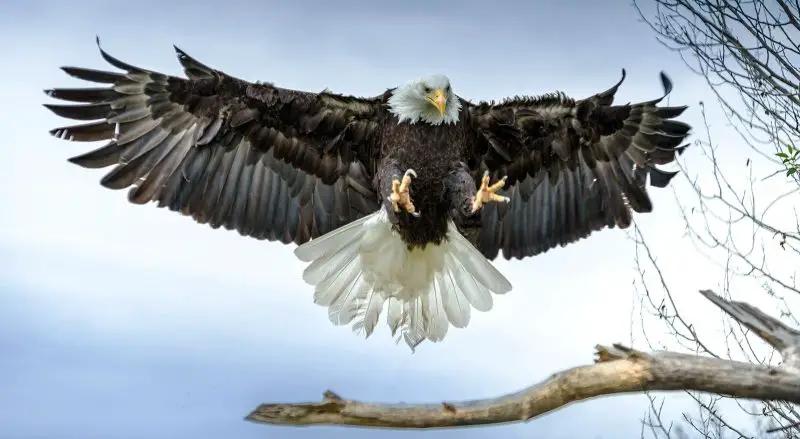
Masters of the Sky with Wings That Command the Wind
Few sights in nature are as breathtaking as an eagle soaring high above the landscape, wings outstretched, barely moving as it rides invisible rivers of air. Built for the skies, eagles possess immense wingspans, ranging from around 5 feet in smaller species to over 8 feet in giants like the Steller’s Sea Eagle and the White-tailed Eagle. These wings aren’t just wide—they’re powerful, versatile, and astonishingly efficient.
The eagle’s wings are broad and deeply slotted, with strong primary feathers that fan out like fingers to reduce turbulence and control airflow. This wing structure enables them to catch thermals—rising columns of warm air—and glide for miles without flapping, conserving energy as they scan the terrain below for movement. Their ability to soar for hours on end with minimal effort is a hallmark of their hunting strategy.
But eagles are not just graceful gliders—they are also capable of sudden bursts of explosive flight. Powered by massive pectoral (chest) muscles that make up nearly a third of their body weight, eagles can launch into the air in seconds, climb rapidly to altitude, or dive at prey with deadly speed and precision. The Golden Eagle, for instance, can reach dive speeds exceeding 150 miles per hour, rivaling some falcons in velocity.
Whether hovering over a mountain ridge or swooping down toward a lake, an eagle’s flight is a combination of strength, finesse, and control, making them undisputed monarchs of the sky.
5. Carnivorous Diet
A Predator’s Menu Tailored by Habitat
Eagles are not just meat-eaters—they are apex predators, commanding the top of the food chain with a diet that reflects their power, agility, and adaptability. As obligate carnivores, they rely entirely on the flesh of other animals to survive, and their hunting strategies and preferred meals vary dramatically across species and ecosystems.
In watery environments, fish-eating eagles like the Bald Eagle and African Fish Eagle reign supreme. These birds have evolved specialized hunting techniques, swooping down with talons extended to snatch fish from the surface in a flash. Their curved claws and textured footpads even help grip slippery prey mid-flight. Fish can make up more than 80% of their diet, especially during breeding seasons when quick, abundant meals are essential.
On land, eagles like the Golden Eagle become formidable terrestrial hunters, targeting a wide range of mammals including rabbits, ground squirrels, marmots, foxes, and even small deer or young goats. Using ambush tactics and incredible speed, they can strike with enough force to kill prey instantly. In the dense forests of Central and South America, the Harpy Eagle prefers arboreal animals such as sloths and monkeys, plucking them from treetops with bone-crushing talons.
Though they are skilled hunters, many eagle species are also opportunistic feeders. When fresh prey is scarce, they won’t hesitate to scavenge carrion or steal kills from other predators, including hawks or ospreys. This adaptability in diet helps them survive seasonal shifts, droughts, and competition.
Whether plucking fish from lakes, ambushing mammals in open fields, or tearing apart carcasses on a cold mountain slope, the eagle’s diet reflects its versatility and dominance in the wild.
6. Powerful Build and Musculature
Engineered for Strength and Precision
Beneath the sleek feathers and regal posture of an eagle lies a body built like a high-performance machine—aerodynamically sculpted, explosively powerful, and remarkably efficient. Eagles are among the largest and most muscular birds of prey, with a frame that reflects both brute strength and refined agility.
Their broad shoulders and robust chest muscles are the engines of flight. These pectoral muscles, which account for nearly a third of their total body weight, power the massive wings through long glides, sharp turns, and sudden vertical ascents. With every beat, they push vast volumes of air, giving the eagle lift and thrust even in thin mountain air or high-speed dives.
Their legs are thick and heavily muscled, providing the strength needed not only to carry prey but to kill it swiftly. When an eagle strikes, it does so with the force of a coiled spring—its legs launching downward in a burst of energy, talons extended, often delivering enough impact to stun or kill instantly.
Despite this strength, an eagle’s skeletal structure is surprisingly lightweight, composed of hollow bones that reduce body mass without compromising durability. This combination allows them to carry prey that may weigh equal to or more than half their own body weight, sometimes lifting it into the air while gaining altitude.
This rare blend of power and lightness, endurance and precision, allows eagles to dominate both the ground and the sky. Whether launching into flight, pinning prey mid-strike, or holding position in a turbulent wind, every muscle and bone in an eagle’s body works in concert to fulfill its role as a master predator.
7. Territorial and Solitary Behavior
Lone Rulers of the Skies
Eagles are not social birds. They are solitary sovereigns, patrolling vast territories with an air of authority and unchallenged control. Unlike many bird species that flock or hunt in groups, most eagles live and operate alone, except for rare moments during breeding or while raising chicks.
Each eagle claims a personal domain, sometimes covering dozens or even hundreds of square miles, depending on food availability and habitat. These territories are vigorously defended, not just from rival eagles but from other birds of prey or intruders that threaten their resources. A trespasser may be met with aerial chases, mid-air talon grapples, or threatening vocalizations that echo across the landscape.
Even within a bonded pair, eagles often maintain separate hunting zones, coming together primarily for courtship, nesting, and raising young. Once the breeding season is over, they may return to their independent routines, sharing a territory but not necessarily traveling or foraging side by side. This independence reduces competition between mates and maximizes their ability to exploit food sources efficiently.
Their solitary behavior also fuels their mystique. Watching a lone eagle soaring above a canyon or perched silently on a cliff evokes a sense of freedom, power, and majestic isolation. These birds aren’t just hunters—they are guardians of the skies, patrolling their kingdoms alone, unwavering and unafraid.
8. Massive Nests (Aeries)
Sky-High Fortresses of Strength and Care
When it comes to nest building, eagles are true giants—both in ambition and in scale. Their nests, known as aeries, are among the largest structures built by any bird species on Earth. Perched high in towering trees or etched into remote cliff faces, these elevated homes reflect the eagle’s strength, precision, and deep parental investment.
Constructed primarily from thick sticks and branches, a typical eagle nest can span 6 to 10 feet across and stand several feet deep. Some have been recorded at over two tons in weight, so massive that they’ve collapsed the very trees that supported them. But these aren’t just piles of twigs—they are thoughtfully designed, layered from the bottom up. The foundation is sturdy and solid, while the interior is lined with soft grasses, moss, feathers, and even pine needles, creating a warm, cushioned space for eggs and eaglets.
What’s even more impressive is that many eagle pairs reuse and add to the same nest year after year, continuously reinforcing and enlarging it. This results in monumental structures that evolve over decades—true architectural legacies passed down through generations. Eagles often maintain multiple aeries within their territory, giving them backup options in case one is damaged or compromised.
The location of these nests is just as strategic. High elevation offers safety from predators, a commanding view of the surrounding landscape, and close access to hunting grounds. From their lofty platforms, eagles raise their young in isolation, protection, and grandeur, cementing their place as both master builders and devoted parents in the wild.
9. Long Lifespan
Enduring Legends of the Sky
Eagles are not only powerful and precise—they are also remarkably long-lived. In the wild, many species regularly reach 20 to 30 years of age, with some individuals living even longer under the protective care of captivity. Their extended lifespan is a testament to their role as apex predators and the incredible adaptations that help them avoid danger and thrive in harsh environments.
From the moment they hatch, survival is a challenge. Young eagles face threats from predators, starvation, and sibling rivalry. But those that survive their first few years gain the skills and strength needed to dominate their ecosystems, and their odds of long-term survival increase dramatically. Once they reach maturity, eagles face few natural enemies, thanks to their size, power, and keen awareness of their surroundings.
A combination of factors contributes to their longevity. Their robust immune systems, efficient metabolisms, and adaptable hunting techniques allow them to thrive in varied environments—from mountain ranges and forests to coastlines and deserts. In captivity, with regular food and medical care, some eagles have surpassed 40 to even 50 years of age, living out lives that span generations of human observation.
This long lifespan also means that eagles often form enduring pair bonds and may return to the same nesting sites for decades, raising multiple generations of offspring from the same lofty perch. As they glide silently through the sky, many of these birds are not just survivors—they are elders of the wild, carrying with them the experience and instincts of a lifetime above the trees.
10. Cultural and Symbolic Importance
Birds of Legend, Emblems of Power
Few creatures have captured the human imagination as profoundly as the eagle. With its piercing gaze, towering flight, and solitary strength, the eagle has become a universal symbol of power, vision, and freedom across cultures and centuries. From ancient mythology to modern flags, these birds are not just wildlife—they are icons.
In many ancient civilizations, eagles were seen as messengers of the gods. The Greeks associated them with Zeus, king of the gods, while the Romans adopted the eagle as a symbol of imperial strength and conquest, emblazoning it on military standards that marched across continents. In Norse mythology, an eagle sits atop the World Tree, Yggdrasil, watching over the realms with all-seeing eyes.
Across indigenous cultures, particularly among Native American tribes, eagles are revered as sacred animals, symbols of spiritual connection, honor, and courage. Their feathers are considered holy and are used in ceremonial dress, healing rituals, and rites of passage. To many, the eagle doesn’t just represent the sky—it represents a bridge between the earthly and the divine.
In the modern world, the eagle remains an enduring emblem. The Bald Eagle, with its fierce expression and snow-white head, was chosen in 1782 as the national bird of the United States, representing the spirit of independence and the soaring ideals of democracy. Other countries, such as Mexico, Poland, and Egypt, have also adopted eagles as national symbols, highlighting their global appeal as icons of strength and resilience.
Whether carved into stone temples, flying across national flags, or inspiring countless tales and beliefs, eagles are more than birds—they are living legends, woven into the fabric of human culture and imagination.
Conclusion: Nature’s Supreme Hunters
Eagles are not just birds—they are symbols of dominance, vision, and strength. Their adaptations for hunting, flying, and surviving in the wild are awe-inspiring. From their piercing eyes to their commanding flight, each characteristic of an eagle reflects millions of years of evolution. Understanding these traits helps us appreciate the role they play in ecosystems—and why they continue to capture the human imagination.



